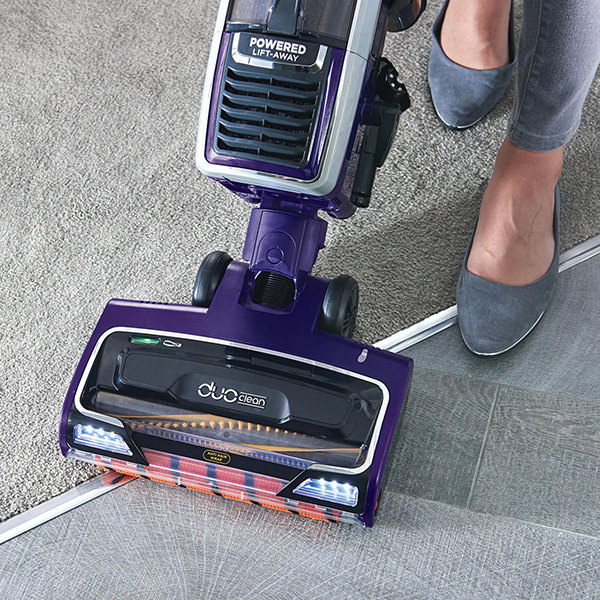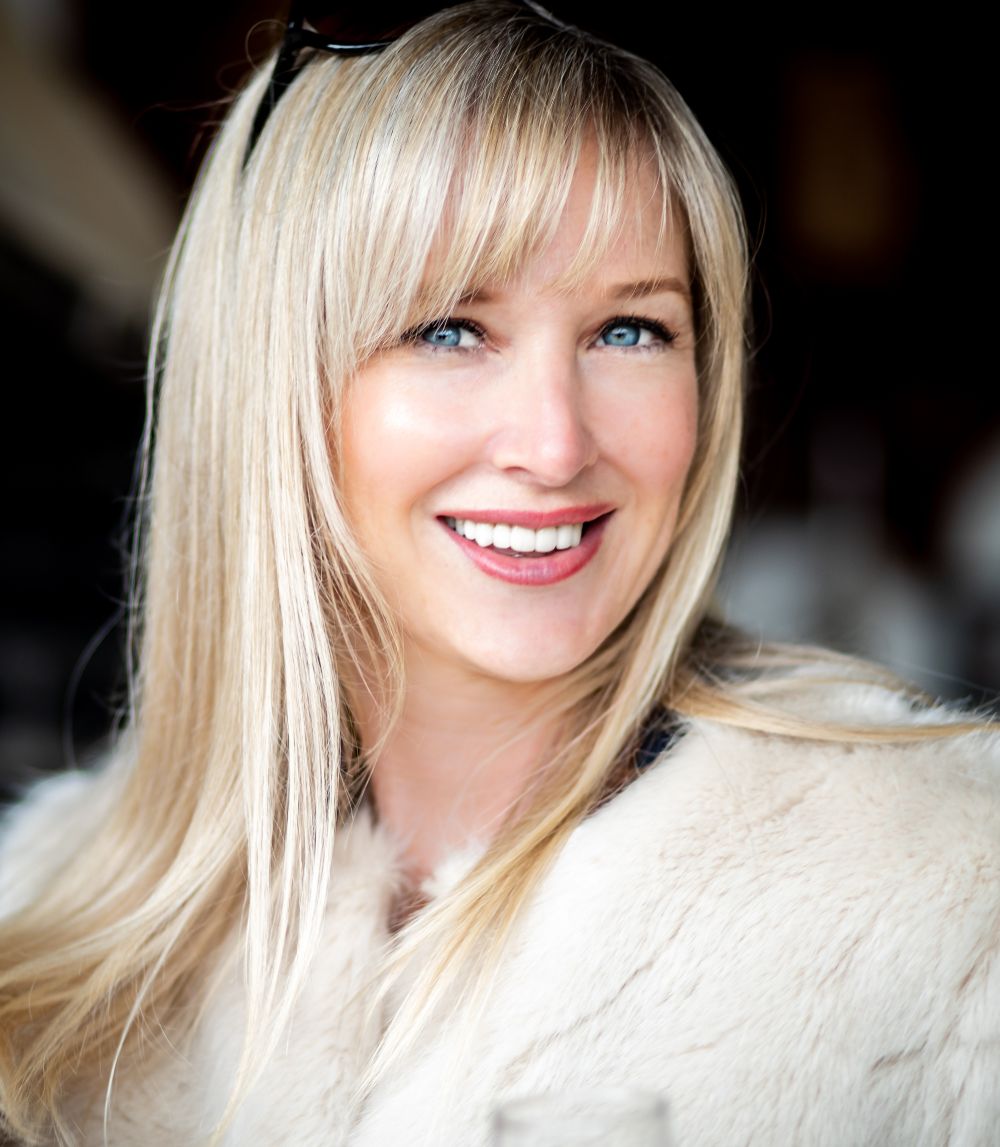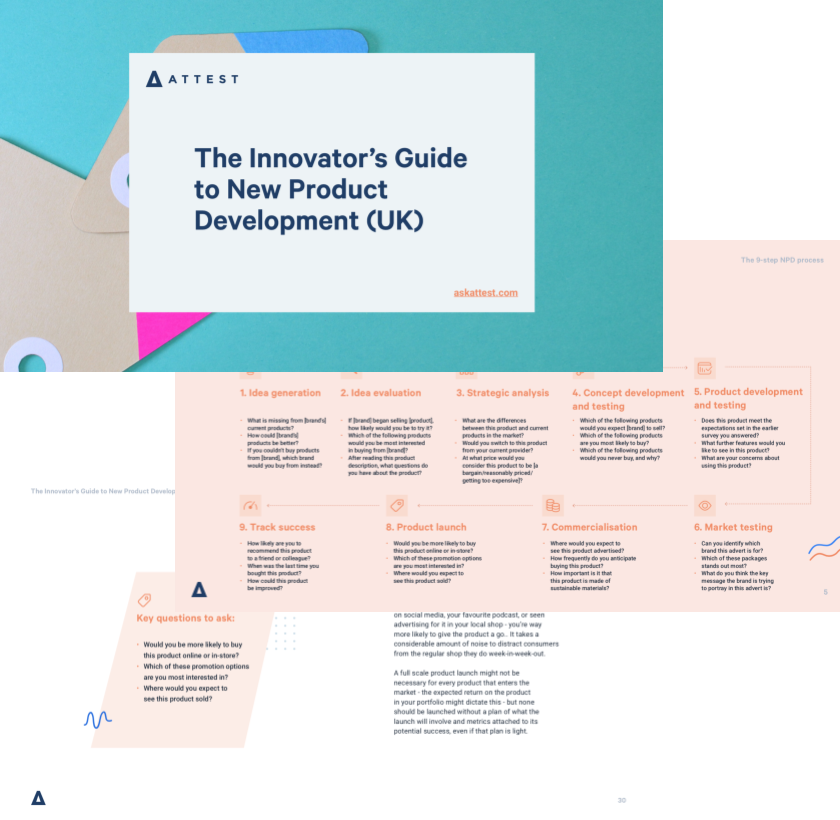Product innovation: how 10 business leaders fuel change

Product innovation can be difficult to get right. Find out how 10 business leaders did it with these product innovation examples.
- Matt Broadway, European President at vacuum cleaner and kitchen appliance brands SharkNinja NinjaKitchen
- Margaret J. King, Director of The Center for Cultural Studies & Analysis
- Greg Bullock, Director of Marketing at light-sensitivity eyewear brand TheraSpecs
- Cathy Sebastian, Owner of customised clothing manufacturer Haberdash
- Lisa McCartney, Co-Founder of board game company PLYT Games
- Paul McGuinness, Director of soft furnishings retailer Terrys Fabrics
- Nathan Thompson, Digital Marketer at furniture retailer Pavilion Broadway
- Max Falb, Digital Marketing Strategist at app development company Fueled
- Carsten Schaefer, CEO of social tools app crowdy.ai
- Danny Ray, Founder of life insurance specialists PinnacleQuote
- A final thought
Sometimes when you’re too close to something it’s hard to see it clearly. That’s why it’s not always the product development team or engineers that are best placed to spot where improvements could be made, or where opportunity for innovation lies. But product innovation is key to long-term growth.
Getting feedback from the people who are actually buying and using the products – your customers – is a great way to pinpoint the developments that could bring you the most commercial success.
To get a better idea of how this works in practice, we asked 10 business leaders to give us examples of how insight has fueled successful product innovation. We asked them:
“How has your brand used consumer insight to inspire product innovation?”
And here’s what they said:
Matt Broadway, European President at vacuum cleaner and kitchen appliance brands SharkNinja and NinjaKitchen
“Solving consumer pain points is a key goal for us. To work out what those pain points are, we prioritise investing time, money, and resources into gathering insight on the user experience of both current products and new products. This way, we can understand the needs of the customer at every user interaction point, which includes every button, handle, knob, and screen. From there, we can execute the necessary changes as the product is being developed.
“All our products are put in front of real people, in real homes, so they can be tested and reviewed in real-life environments.
“Our latest Shark Anti Hair Wrap Technology was inspired by our direct customer interaction, which revealed that vacuum owners are tired of removing tangled hair from the brush-roll. This technology actively separates and removes hair from the bristle brush as you clean. SharkNinja is dedicated to developing 5-star rated products which have been informed by the distinctive feedback gathered from consumers across our expanding markets.”

Margaret J. King, Director of The Center for Cultural Studies & Analysis
“I head a think tank that studies human behaviour and decision-making, for insights into buying behaviour. Examples of cultural analysis are in products and experiences everywhere, including jewellery, theme parks, real estate, food and beverages.
“Research requires taking a very long view (not just instant snap-shots) of human behaviour to ask how people use these things and, most importantly, why? How do they serve our deepest motivations and values?
“One example is jewellery. We discovered that diamonds aren’t purchased for their investment value or even aesthetics, but to mark important relationships. For NASA, we found that space exploration is important to humans not for its science, but for the human values of challenge and exploration. NASA sells it as science, so that revelation is an innovation for a government agency.”
Greg Bullock, Director of Marketing at light-sensitivity eyewear brand TheraSpecs
“Through a combination of post-purchase surveys, review requests, and targeted outreach, TheraSpecs customers have provided incredible value. They’ve helped our team improve existing products and offer new variations on our core catalogue. For example, they helped us pinpoint a quality control issue with one of our most popular models of therapeutic glasses. As we learned more about their experiences, we recognised it was a replicable problem — one that we addressed in future generations of the frame style.
“Another great example stemmed, ironically, from those customers who were not avid fans. Although the vast majority love our products, there was a small but vocal group of customers who expressed that our lenses were ‘too dark’ to wear at work or ‘not dark enough’ to provide meaningful relief. These were otherwise perfectly-qualified prospects looking for slightly more customised solutions for their light sensitivity, so we were able to work with our suppliers and offer specialised lens variations that could help these people and ultimately further our company mission.”
Cathy Sebastian, Owner of customised clothing manufacturer Haberdash
“Our main customer base is local entrepreneurs who start clothing side hustles. One particular customer markets to Historically Black Colleges and Universities (HBCUs), and they wanted to offer a product completely new and different.
“We’re small enough that we can take an idea and run with it. We played around with every garment treatment we offer and came up with cutting out large colourful letters from felt and sewed them onto tee-shirts, sweatshirts, jogger pants and caps. This collaboration became our Colorfelt Collection – to date our most popular product offering.
“We also work with an advertising agency who comes to us when their creatives have an idea to pitch to a client. We turn the idea into a physical product. Our philosophy of helping newbies hatch their vision has led to several innovative product offerings for us and we are really grateful.”
Lisa McCartney, Co-Founder of board game company PLYT Games
“We make a number of games for the whole family, and we’re always talking to our customers. We gather feedback at play events, networking meetings and teacher courses, as well as on social media.
“Our customers love playing games together, but we found that they get bored playing the same game. We also discovered some members of the family may like different types of games. This means they want variety but they also have a limited budget.
“That insight inspired us to create our Game Platforms ‘PLYT’, ‘NumBugz’ and ‘Whotchilli’ – tabletop games that can be played in many different ways. They offer great value for money and they keep families happily playing together. We also create new games for the platforms, which we give to our customers for free, to encourage them to continue playing. We’ve no background in games so I guess we came into this from a parent/consumer perspective in the first place.”
Paul McGuinness, Director of soft furnishings retailer Terrys Fabrics
“Our customer service team found that they were often inundated with product sample requests. Many customers found it difficult to visualise how the products on sale would look within their current home interiors. This was an issue for many people, particularly if specific samples were unavailable or they were short on time.
“After listening to customer feedback and seeing a gap in the market for innovation, we launched the Terrys Fabrics Window Planner. It’s an app which uses imaging technology to virtually display how product variations will look in customers’ homes, before they purchase. We believe this offering will help customers to make the right purchase every time, without needing samples.”
Nathan Thompson, Digital Marketer at furniture retailer Pavilion Broadway
“We are constantly using the internal search function on our site to inform merchandising choices, and to identify areas for growth in our product catalogue. We find it’s the most effective way to spot the trends that actually matter to our customers at their nascent stage, so we can take action before our competitors. This also informs the way we merchandise our products – we use customer interactions and purchases to determine which products we surface at the top of search results pages in future.
“A lot of our own Pavilion Chic range is informed by consumer search trends. For example, when we recently saw an uptick in searches for ceramic tables, we looked to improve our range.”
Max Falb, Digital Marketing Strategist at app development company Fueled
“At Fueled, we are always using consumer insight to make sure we are delivering the best apps possible, that we know people will use and enjoy using. Recently we created apps for Barney’s and Warby Parker. We conducted focus groups in order to get consumers’ thoughts on what they want from the app, and how they interact with the prototypes. At Fueled, we believe that creating the best apps means understanding and going beyond what people expect and desire out of a specific app.”
Carsten Schaefer, CEO of social tools app crowdy.ai
“Before launching a paid product, we ran a closed beta version of our app for free for about three months. During this period, we let our users play around with each aspect of our app completely free, provided that they give us detailed feedback. It has helped us launch several new features and refine our onboarding and marketing campaigns.
“In short, it turned out that some features need to be simplified and that overall, our website didn’t fully show what our app could do. We used the information to create a few new features, update some others, and completely revamp our website’s design and copy.”
Danny Ray, Founder of life insurance specialists PinnacleQuote
“As an independent agent in the life insurance space, my clients’ feedback helps me tweak the technology, lead generation options and products that I offer to be the very best available nationwide.
“I’m able to use consumer insight to build customer personas, as well as individual client profiles. That allows me to find the very best product fit for each individual. This works alongside artificial intelligence technology that delivers dynamic text and emails that the client can interact with for a great overall experience.”
A final thought
Product innovation comes in many forms, and innovation examples or inspiration are everywhere these days, but tapping into the collective wisdom of consumers is the logical starting point. You can use consumer surveys to discover people’s frustrations with current offerings in your industry and understand where improvements could be made.
Looking to build innovative new products or services, but don’t know where to begin? Check out our innovator’s guide to new product development.
Tell us what you think of this article by leaving a comment on LinkedIn.
Or share it on:

